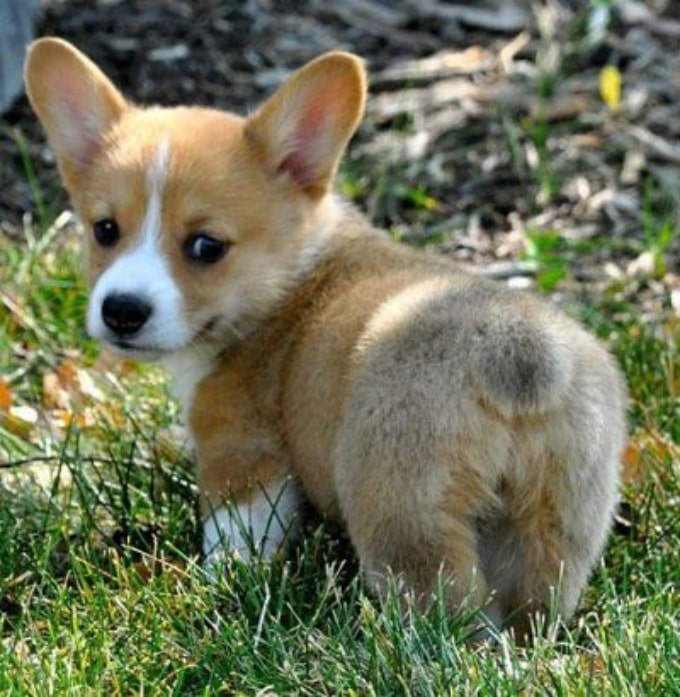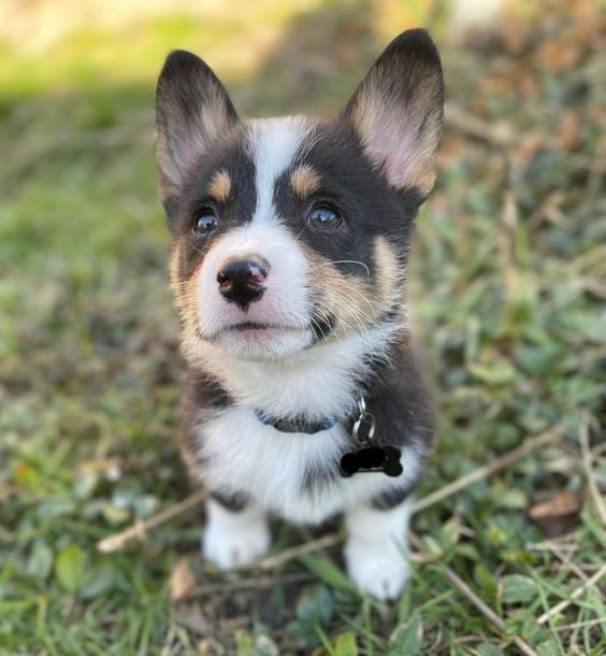Mini Corgis: Your Full Guide

Corgis may be tiny, but they’re certainly not easily overlooked. These cute balls of energy are hard to miss, with their short legs and long bodies.
Their unique physical features and appealing demeanor have made them one of the more popular dog breeds. To try and keep up with the market’s growing demand, breeders use cross-breeding and sub-breeding from the Corgi.
So, what is a Mini Corgi? And how are they different from their Corgi parents? Let’s find out.
Mini Corgis: An Overview
Take a look at some of the unique features of the MIni Corgi.
Temperament
Despite their small stature, Corgis have quite the dominant personality. After all, they’re originally herding dogs and they have many of the traits typically associated with this type of canine.
You may notice that Corgis are brave, fearless, and hard-working. Yet, they’re not known to be aggressive or fierce. In contrast, they’re loyal, protective of their loved ones, and affectionate.
Although, they may be slightly suspicious of other dogs they haven’t met before. However, with some socialization training, they can learn how to get along with all other pets.
Appearance

Mini Corgis stand at an average of around 10–12 inches tall and weigh about five pounds. Their upright ears and long noses give them their distinguished appearance. Yet, it’s those wide, dreamy eyes that make them hard to resist.
In addition to their short, stocky legs and long bodies, Mini Corgis are known for their double coats. Not only are they waterproof, but they’re also made up of thick, short fur with the ur around the face being softer.
Their outer coat colors usually come in four colors that come with white markings. The most common are red, sable, black, and tan. from sable, fawn, or deep red.
You may also find black and red-headed Corgis. These usually have tri-colored coats with white or tan markings.
As for the undercoat, it’s almost always tan-colored. It’s also more plush than the top coat layer, which helps them regulate their body temperatures during both hot and cold weather.
Training
Mini Corgis are always up for a fun time. They’re highly intelligent and it shows in their eagerness to learn new tricks. In fact, Stanley Coren’s The Intelligence of Dogs ranks the Corgi 11th out of 110 dog breeds.
However, one of the drawbacks of owning a smart dog is that they’re strong-willed and often have a low tolerance for boredom, and the Mini Corgis are no exception. So, to keep them interested and avoid stubborn behavior, make sure to keep each training session short, fun, and filled with positive reinforcement.
Health Risks
On average, Mini Corgis have a lifespan of around 12 years. They’re generally healthy dogs with the majority passing away from natural causes like old age.
Unfortunately, one of the more common health issues Corgis tends to suffer from is hypoglycemia, or when blood sugar levels drop to dangerous levels. In dogs, this can happen quite rapidly and can even be fatal if not taken care of right away.
Other potential health conditions among Mini Corgis include:
- Hip dysplasia
- Degenerative myelopathy
- Progressive renal atrophy
- Epilepsy
- Von Willebrand’s disease
Are Mini Corgis a Recognized Breed?

No. There’s no such thing as a ‘Miniature Corgi’ breed. They’re not genetically different from the regular-sized recognized breed of Corgis. The only difference is that Mini Corgis are bred to be smaller in size. Still, even as adults, they continue to hold on to their charming behavior and puppy-like appearance.
There are currently only two recognized Corgi breeds in the world: the Cardigan Welsh Corgi and the Pembroke Welsh Corgi.
What started out as one breed, Corgis, that was officially recognized by the Kennel Club in England back in the 1920s soon became two, and it’s been that way ever since.
The primary feature that differentiates these two breeds is their tail. The Cardigan Corgi have prominent, full-length tails. They’re often bushy, hang quite low, and tend to measure between 24” and 29” long.
The Pembrokes, on the other hand, are known as the breed of Corgi born with a super short tail that measures only 4–5 inches long. Then, when they’re between 2 and 5 days old, owners dock their tails to conform to the Breed Standard set by the American Kennel Club (AKC).
This tradition started out as a way to prevent cattle from stepping on their tails as the Pembroke Corgis herded them. Another reason is that it was thought to prevent injuries and increase the dog’s speed.
Breeding Mini Corgis
Mini Corgis are the result of two naturally small dogs breeding, typically a standard Corgi with a smaller breed, such as a Chihuahua, Pomeranian, or Dachshund.
However, the problem with this type of breeding is that it can lead to health complications like birth defects, liver shunts, and malnourishment. That’s why many dog lovers continuously advocate against buying mini or teacup dogs.
Unfortunately, there are unethical breeders out there that produce small-sized Corgis only for financial gain. They don’t put any forethought into the process, which ends up harming the dogs and ripping off unsuspecting buyers.
Avoid buying dogs from online ads. These are usually backed by bad breeders and scammers.
That’s why you should seek out reputable breeders. They’ve made it their life mission to produce well-bred, healthy dogs and they’re not just in it to make a quick buck.
One of the ways you can ensure you’re dealing with an ethical breeder is that they carry out health tests on both parent dogs. This helps ensure that each breed is free of any genetic defects that could potentially be passed on to their offspring.
Always ask about a breeder’s practices before committing to buy a new puppy and bring it into your home. Also, if you can, check the health of the puppy’s parents or recent relatives. Puppies that come from sick parents will quickly start showing signs of sickness themselves.
Another option is to adopt a Mini Corgi from a rescue center or local animal shelter. If you do, be sure to get it tested for Lafore’s disease and Progressive retinal atrophy (PRA).
The Fascination with Mini Corgis

Still on the fence about getting a Mini Corgi? Here are a few reasons to help sway you in their favor.
They’re Easy to Care For
The rule of thumb is that smaller dogs have less hair to shed than bigger, hairier dogs, which also applies to Mini Corgis. They have relatively short and straight fur that needs to be groomed 2–3 times a week.
Also, because they’re energetic and love running around, they’ll often come home laden with dirt and mud. This can be a problem if you’re living in a small space.
However, a quick wash once or twice a month will do the trick and you’ll be able to get your adorable Mini Corgi back to its clean, shiny self.
They’re High-Energy
Always remember that, despite their small size, Corgis were originally herding dogs. As such, they have an innate sense to round up and take care of others. So, don’t be alarmed if they start herding other pets in your home or even family members.
Part of this herding instinct is what makes them highly energetic. Even though they’ve become indoorsy than previous generations, Corgis still do much better when they’re paired with active owners.
They’re also super intelligent and demand regular mental stimulation to keep them busy and alert. Otherwise, they’ll become bored and start to misbehave.
They’re Family Friendly
According to the AKC, Corgis are ranked 11th out of 199 breeds of the most popular dog breeds in the US. One reason for their popularity is they’re the smallest dog in their herding group.
Thanks to their small size, Mini Corgis make wonderful family pets. They’re quick to adapt to home life, are incredibly loyal, and fit right in with every member of your family.
Mini Corgis are also extremely gentle and affectionate. So, you don’t have to worry about leaving them alone with your kids.
They’re Suitable for Small Living Spaces

Do you live in a small home or apartment? Then, a small dog is definitely the better option. Yet, not all small dogs can acclimate to living in a confined space.
Luckily, Mini Corgis have no qualms about it. Even though Corgis are originally herding dogs, they prefer being indoors than out, making them the ideal pet. That said, Corgis still need their fair share of sunshine, fresh air, and 30 minutes of physical exercise every day.
Also, like most dog breeds, they need to be mentally stimulated to keep them from getting bored. Otherwise, they’ll act out and create havoc in your home.
A Final Note
Mini Corgis are adorable dogs that make great pets. These intelligent fur balls are fiercely loyal, affectionate, and affectionate towards their loved ones.
They’re also high-energy, so make sure you provide them with plenty of physical exercise and mental stimulation. This will keep their bodies in good shape and their minds sharp and alert.
Then, when you’re ready to introduce a Mini Corgi into your home, make sure you buy from an ethical breeder or adopt from a local shelter. After that, all they need from you is to shower them with the love, care, and attention they need to grow healthy and happy.





